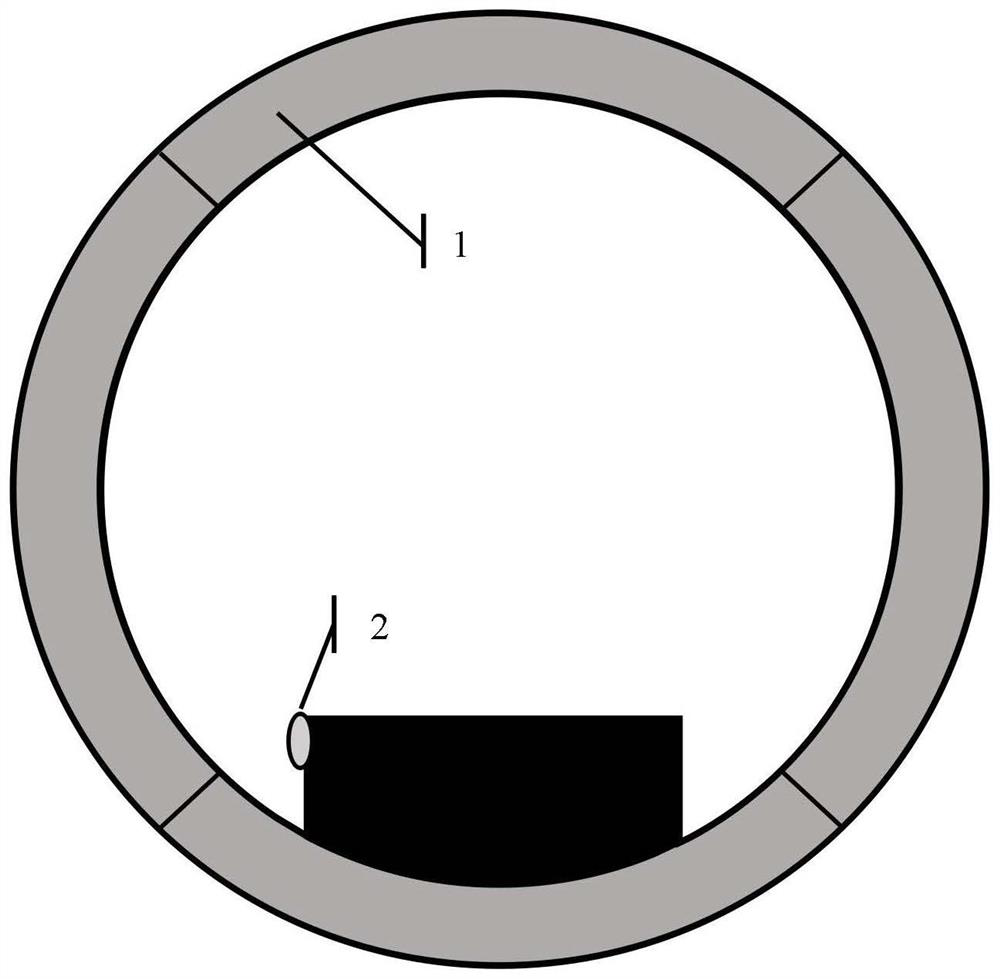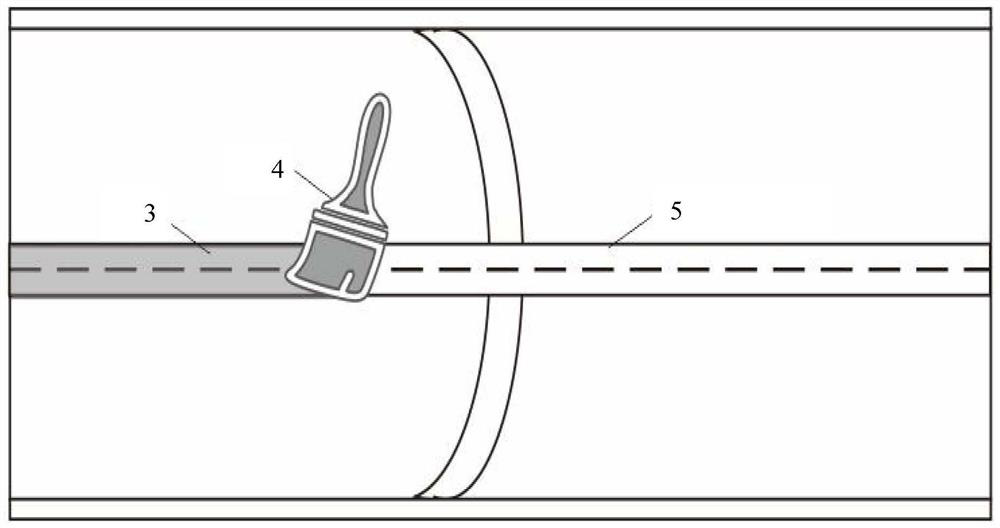Tunnel deformation monitoring method based on distributed multipoint strain and displacement conversion network
A strain monitoring and displacement conversion technology, applied in neural learning methods, biological neural network models, measurement devices, etc., can solve problems such as monitoring blind spots, poor spatial continuity, and inconvenient engineering applications, and achieve the effect of improving spatial continuity.
- Summary
- Abstract
- Description
- Claims
- Application Information
AI Technical Summary
Problems solved by technology
Method used
Image
Examples
specific Embodiment approach 1
[0023] The tunnel deformation monitoring method based on distributed optical fiber multi-point strain and displacement conversion network, such as figure 1 As shown, the method includes the following steps:
[0024] Step 1: Establish a total-station robot displacement monitoring system and a distributed sensing optical fiber strain monitoring system respectively in the tunnel structure, and obtain the displacement monitoring data of the total-station measuring point and the distributed sensing optical fiber multi-point strain monitoring data I. The multi-point strain monitoring data I of the sensing fiber is subjected to mean preprocessing to obtain the multi-point strain monitoring data of the distributed sensing fiber II; the purpose of the mean preprocessing is to reduce the abnormal value of the multi-point strain monitoring data of the distributed sensing fiber. influences;
[0025] Step 2: Use the spatial correlation consistency between the distributed sensing optical f...
specific Embodiment approach 2
[0029] This embodiment is a further limitation of the specific embodiment 1. The described tunnel deformation monitoring method based on the distributed optical fiber multi-point strain and displacement conversion network, when acquiring the newly collected displacement monitoring data and distribution of the whole station measuring points during the operation monitoring based on the multi-point strain monitoring data of the multi-point sensing optical fiber, repeat steps 1, 2 and 3 to establish a new training sample set II, based on the set of training sample set I and training sample set II The displacement transformation network is updated and optimized.
specific Embodiment approach 3
[0030] This embodiment further describes the tunnel deformation monitoring method based on the distributed optical fiber multi-point strain and total station displacement conversion network described in the specific embodiment 1. The step 1 specifically includes the following steps:
[0031] Step 11: Determine the key sections along the line, set up all-station measuring points, establish a total-station robot displacement monitoring system, and collect and obtain the displacement monitoring data of the total-station measuring points for several monitoring days;
[0032] Step 1 and 2: Determine the installation position of the optical fiber, complete the grinding and dust removal, and coat the primer, arrange the distributed sensing optical fiber along the line, establish a distributed sensing optical fiber strain monitoring system, and collect the multi-point strain of the distributed sensing optical fiber for several monitoring days. Monitoring data I;
[0033]Step 1 and 3: ...
PUM
 Login to View More
Login to View More Abstract
Description
Claims
Application Information
 Login to View More
Login to View More - R&D
- Intellectual Property
- Life Sciences
- Materials
- Tech Scout
- Unparalleled Data Quality
- Higher Quality Content
- 60% Fewer Hallucinations
Browse by: Latest US Patents, China's latest patents, Technical Efficacy Thesaurus, Application Domain, Technology Topic, Popular Technical Reports.
© 2025 PatSnap. All rights reserved.Legal|Privacy policy|Modern Slavery Act Transparency Statement|Sitemap|About US| Contact US: help@patsnap.com



